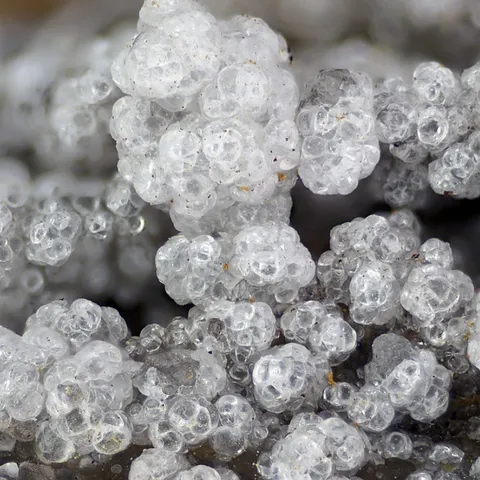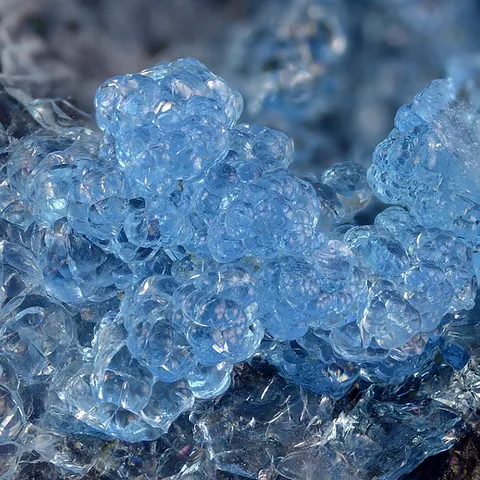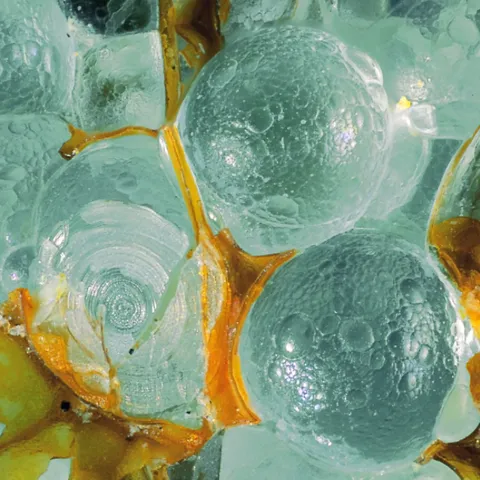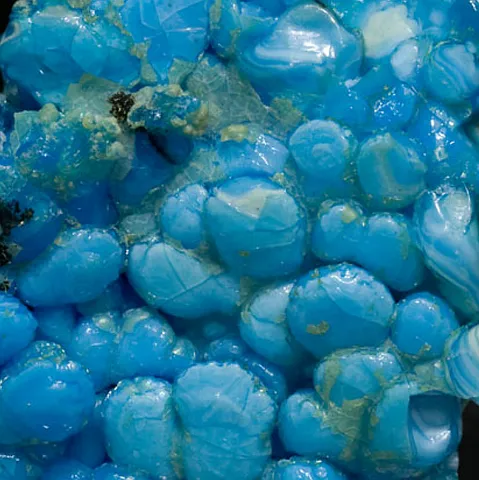ALLOPHANE
Class : Silicates
Subclass : Phyllosilicates
Crystal System : Amorphous
Chemistry : Al2SiO5 3H2O
Rarity : Fairly common
Allophane is a rather mysterious, probably amorphous, hydrated alumina silicate whose precise chemical composition, in particular its water content, remains to be established. It takes its name from the Greek allos (other) and phainein (to appear), because it has the particularity of changing its appearance when subjected to heat. It is a fairly widespread mineral as a product of the alteration of volcanic tuffs, or as a mineral of hydrothermal alteration in igneous rocks in which it derives from feldspars, in hydrothermal copper deposits or various sedimentary rocks. The allophane forms earthy masses, porcelain encrustations, sometimes white stalactites or variously colored blue, yellow to pale green, or dark green to brown. These colorations frequently reveal the presence of impurities, mainly iron oxides. It is a mineral that has some success with collectors when its color is blue.
Allophane in the World
Twinning
No twin known for this mineral species.
Fakes and treatments
No fakes reported for this mineral species, but can easily be confused with chrysocolla, gibbsite, hyalite opal, etc...
Hardness : 3
Density : 2,75
Fracture : Conchoidal
Trace : White
TP : Translucent to transparent
RI : 1.468 to 1.512
Birefringence : None
Optical character : None
Pleochroism : None
Fluorescence : Sometime green
Solubility : Hydrochloric acid
Magnetism : None
Radioactivity : None





